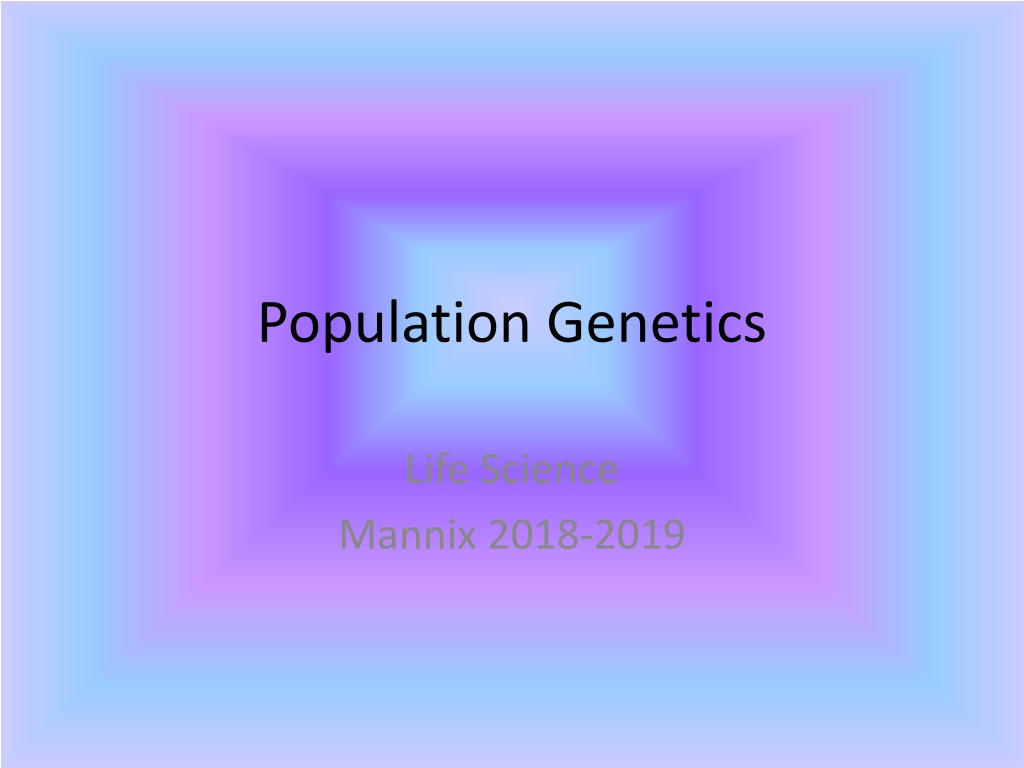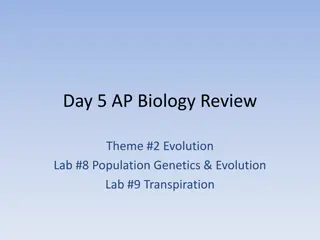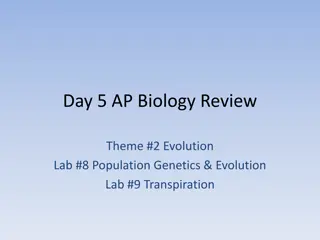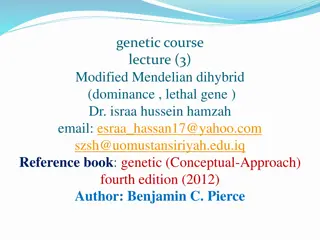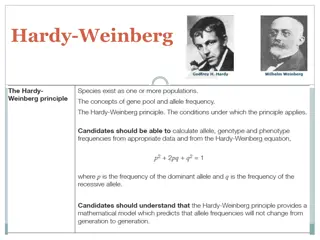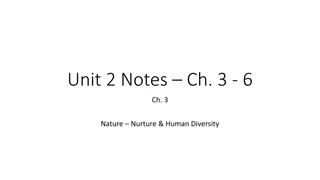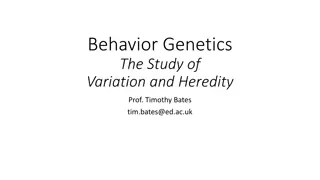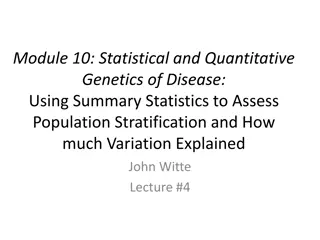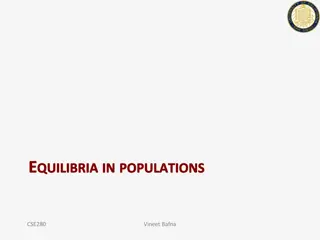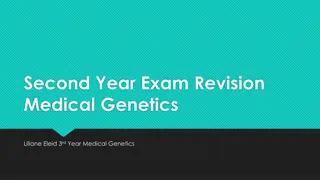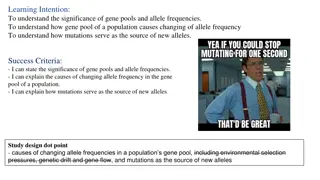Understanding Population Genetics and Allele Frequency Changes
Population genetics explores how allele frequencies change within populations due to factors like mutations, migration, genetic drift, nonrandom mating, and natural selection. Mutations introduce new variations, migration affects gene flow, genetic drift causes random allele loss, and examples like founder and bottleneck effects illustrate genetic changes over time.
Download Presentation

Please find below an Image/Link to download the presentation.
The content on the website is provided AS IS for your information and personal use only. It may not be sold, licensed, or shared on other websites without obtaining consent from the author. Download presentation by click this link. If you encounter any issues during the download, it is possible that the publisher has removed the file from their server.
E N D
Presentation Transcript
Population Genetics Life Science Mannix 2018-2019
Introduction Population genetics is the study of change in the frequencies of alleles within a population. 1 allele comes from mom and the other from dad. 2 alleles together is called the genotype The physical representation of the genotype is the phenotype.
5 Factors that change Allele Frequency 1. Mutation rates 2. Migration in and out of an area 3. Genetic drift 4. Nonrandom mating 5. Natural selection
Mutations Errors in DNA or RNA replication Causes new variations! Remember only variations that help out an organism (make them better suited to survive will continue to show up over and over again through the generations) https://www.youtube.com/watch?v=GieZ3pk9Y Vo
Migration Movement of individuals from one population to another. Immigration: movement into a population Ex: A flock of birds move into a new area for a certain season Ex: Humans move to a country that is NOT where they are born. Emigration: movement out of a population Ex: When the flock of birds left their original living place. Ex: Human leave the place they were born. A huge influence to changes in allele frequencies.
Genetic Drift RANDOM loss of alleles in a certain area. Founder Effect: small group of individuals move away Bottleneck Effect: a sudden decrease in population size due to some kind of natural disaster. https://www.youtube.com/watch?v=W0TM4LQm oZY
Genetic Drift Examples Does the below example represent the Founders effect or the Bottleneck effect? How do you know? Afrikaner population of Dutch settlers in South Africa is descended mainly from a few colonists. Today, the Afrikaner population has an unusually high frequency of the gene that causes Huntington's disease, because those original Dutch colonists just happened to carry that gene with unusually high frequency.
Genetic Drift Examples Does the below example represent the Founders effect or the Bottleneck effect? How do you know? Northern elephant seals have reduced genetic variation probably because of a population bottleneck humans inflicted on them in the 1890s. Hunting reduced their population size to as few as 20 individuals at the end of the 19th century
Nonrandom Mating Mating that occurs more or less frequently than expected (does not fit a regular punnett square) Inbreeding: mating with relatives, increases homozygous recessive traits. Out breeding: mating with non-relatives, increase heterozygosity. (MORE DIVERSE/BETTER!!)
Selection Artificial Selection: People influenced We select traits for a desired outcome. EX: Labardoodle or Pomchi
Selection Natural Selection: the environment selects for the traits that are best FIT to survive. https://thekidshouldseethis.com/post/evoluti on-101-how-natural-selection-works-nova-pbs
Types of Natural Selection Stabilizing Extreme phenotypes are eliminated in a population. Disruptive Intermediate (middle) phenotypes are eliminated in a population. Directional A single extreme phenotype is eliminated in a population.
Stabilizing Selection Favors the average individuals!
Disruptive Selection Extreme traits are preferred In the African seed-cracker finch, large and small beaked birds are more common because they are able to open the large and small seeds present in the population.
Directional Selection One particular phenotype is favored. Fossil records show that black bears in Europe decreased in size during periods between continental glacial coverage during the ice ages, but increased in size during the glacial period. This was likely because larger individual enjoyed an advantage in conditions of limited food supplies and extreme cold.
